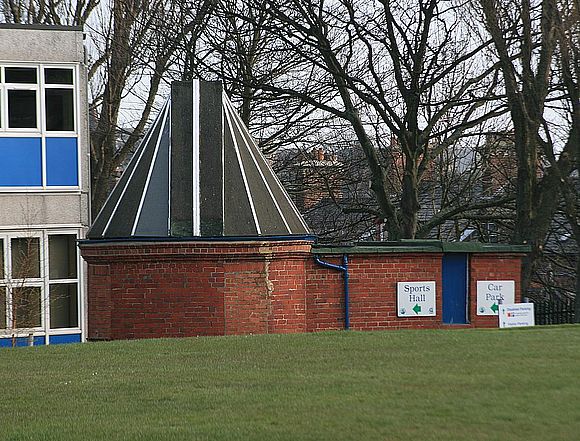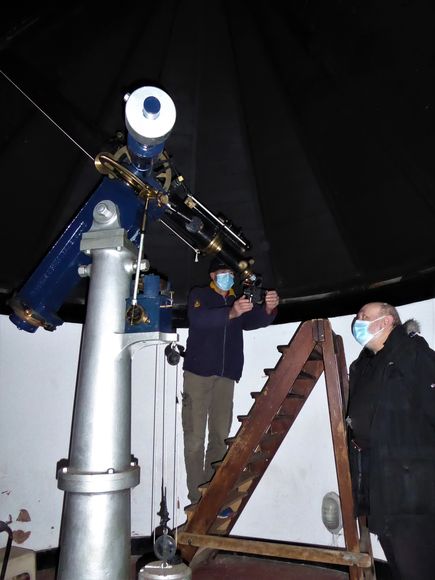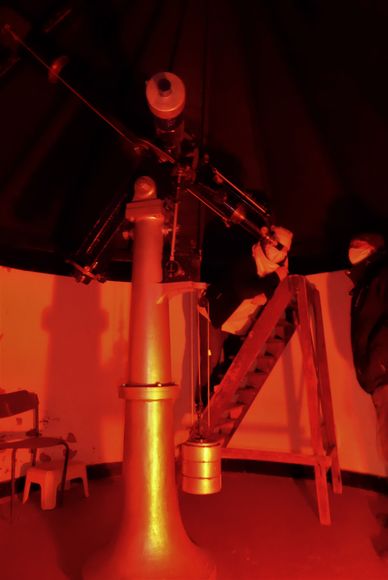Sunday night is observing night at the Bruce Observatory. This has been the case for many a year now. Open to members and public alike, on paper every Sunday from early Oct to April (barring a few) are potential observing windows on the universe. Things tend not to work like that in reality and probably 60% of Sunday open nights are cancellations or obvious no-shows due to weather conditions. That is the brutal truth of observing in the UK on set nights. Initially 'Open Nights' were fortnightly, until we finally grasped that truth and so now each Sunday is set aside for viewing, potentially a tally of 26 dates from October to April. Some years may realise 10, or exceptionally a dozen nights out of that tally, most years its just 5 or 6 occasions we actually do get to observe through the 5" vintage Cooke refractor.
The 2023 autumn observing sessions at the Bruce Observatory fared better than average given the unsettled weather experienced. Oct 1st was reasonably clear and quite satisfactory views of Saturn were seen through the Cooke refractor. Low power eyepieces are normally employed to start (32, 40 or 42mm), before trying out the mid-power range, inserting 21, 18 or 17mm ones. Finally, the 10, 12 or 13mm eyepieces are used for higher magnification views. The focal ration of the 5" Cook refractor is around f15, so the images yielded for any given eyepiece are quite large. Only when 'seeing' is exceptional do we use eyepieces of 9mm or below. Generally, magnifications of above 120x-150x in the UK are a waste, magnifying poor atmospherics only. We have found that 12 -13mm eyepieces used on the Cooke produce the optimum 'high magnification' image pleasing to the eye.
This was the case on Oct 1st for Saturn, allowing the Cassini gap to be glimpsed along with several moons. Jupiter was still low due east, a direction rather closed off to the Cooke with a nearby row of trees preventing observations in that direction, although as the leaves fall and trees are bare over winter - gaps in the branches can be exploited sometimes. Jupiter was thus partially observed that night. Oct 8th was a no-show, cloud and rain throughout the day and evening preventing 'play'.
For Oct 15th conditions were satisfactory for viewing and society members used the opportunity to again view Saturn, and later, Jupiter - perched as we were on the tall step ladders in order to access it in the gap between trees opposite. More satisfying was the effort put into locating Neptune from using star charts and App planetarium programs, finally doing so, not an easy task with an f15 scope! Thrilled to have tracked down the miniscule disk of the outermost planet, the view was rather underwhelming, increased magnification doing little to improve matters. Indeed, was it Neptune at all. Clouds then ended that debate!
The following Sunday - Oct 22nd, sky conditions were probably better than the week before, and with a quarter phase Moon visible, the Cooke refractor came into its own. The shadows across the dark floor of the crater Plato clearly revealing the encircling rugged crater ramparts. The Apennine Mountains looked stunning, as did the straight range. Deep shadows filled craters nearest the terminator edge - Eratosthenes particularly eye catching. One feature that does garner attention when the illumination is just right is Rupes Recta - the 'straight wall' seen as an unnatural looking thick straight black line when the Moon is waxing and a bright white one when waning. It is a fault graben and is neither straight nor a wall but a gentle incline!
After scrutinising the Moon, we turned to Saturn, always stunning, noting 3 of its moons close in, as well as Titan. Several eyepieces were utilised - a 13mm Hyperion being top choice. So, could we track down Neptune again, yes, we could. And was the disk visible - Hmmm, jury was still out. Perhaps confirmation with a larger aperture will be required.
Moving the dome round in the direction of Jupiter was the evenings 'work out', propelled via mining buggy wheels, rope, and muscle! Luckily Jupiter was in the tree gap and looked splendid with attendant Galilean Moons. Callisto and Europa on one side and Io and Ganymede on the other. To the eye the vista looked very symmetrical, Callisto and Ganymede a similar distance from Jupiter either side, and Europa and Io likewise, but closer in. Satisfied with the evenings observations we departed by 21:00hrs. Working days beckoned for some.
Oct 29th, Clouded out! Mizzle.
- Log in to post comments




